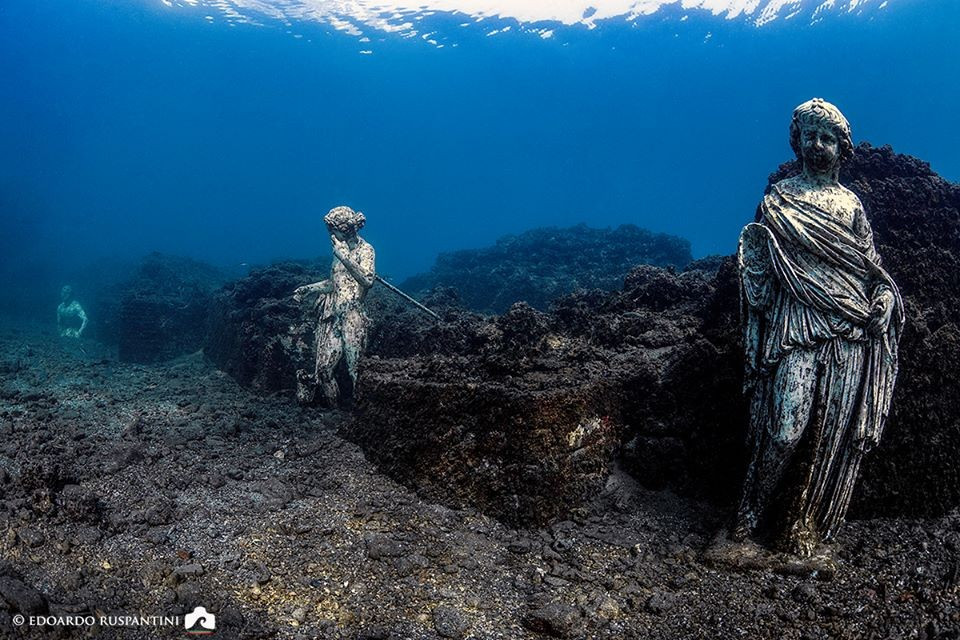Baiae was one of the most important cities of ancient Rome and the Roman seaside resort, overlooking the Bay of Naples. It was a place where rich Romans and emperors spent their leisure time in their luxurious villas clustered in terraces all around the bay near Naples.
A city of Baiae – named after Baios, Odysseus’ helmsman – was connected to the Roman Empire’s biggest naval base, Portus Julius, home port of the western Imperial Fleet of ancient Rome.

Over several centuries, Baiae was Naples Bay city, even more famous than Pompeii, Herculaneum, and Capri. However, according to ancient records, it was also the city of scandals, corruption, and hedonistic temptations.A major philosophical figure of the Roman Imperial Period, Seneca, called Baiae a “resort of vice,” while Ovid, a Roman poet referred to it as a “favorable place for love-making.”Famous for its prestigious baths and thermal springs, the ancient city of Baiae was a fashionable bathing and recreation area of the rich and famous individuals of ancient times.
Emperors Caligula, Nero, Hadrian, and Gaius Julius Caesar once owned elegant summer villas in Baiae. Cicero, a Roman philosopher, politician, lawyer, orator, political theorist, consul, and constitutionalist entertained them during Saturnalia feasts – a holiday established in honor of Saturn.Today Baiae – built during the time of Emperor Claudius – is not a playground of the Roman emperors anymore.Floors of black and white mosaic attest to long-forgotten villas, remains of ancient amphorae were once held in emperors’ hands – now are scattered across the ocean floor.Baiae lies submerged in just a few feet of water, with all streets, imperial luxury villas, and statues.

Due to high amounts of volcanic activities around Baiae, over the course of 2000 years, the ground level of Baiae kept rising and falling, which ultimately led Baiae and its port to collapse into the ocean.
The underwater environment takes us back into the past, allowing us to view the reconstruction of the marble statues, the main street Herclanea, and the surrounding thermal bath complex. The first recovery of archaeological finds related to Baiae took place in the 1920s when the construction works of the widening of the docks at Port Venero, sculptures, architectonic elements, and water systems with imperial insignias came to light.One of Baiae’s greater discoveries was a nymphaeum found in one of the sunken buildings. It belonged to Claudius (10 BC-54 AD), a Roman emperor from 41 to 54 (the first Roman Emperor to be born outside Italy).
Because he was afflicted with limp and slight deafness due to sickness at a young age, his family ostracized him and excluded him from public office until his consulship, shared with his nephew Caligula in 37.
In the 1940s, aerial photographs taken by pilot Raimondo Baucher provided evidence of the submerged archaeological area of Portus Julius in the shallow waters directly in front of Lucrine Lake, a lake of Campania, Italy.Unfortunately, despite interest raised by these discoveries, the first underwater survey of Baiae did not take place until the 1960s. The surveys conducted between 1959 and 1960 contributed to the first map of the sunken city.Other interesting finds were found in the vicinity of Punta Epitaffio at a depth of approximately 6 meters. One is a paved road flanked with buildings and statues reaching out into the sea using cemented jetties. They are known to have belonged to the marine quarter of the Pisonian villa.